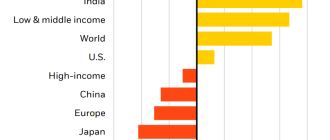The Federal reserve provided emergency lower rates that investors demanded on Tuesday at 10 am. The ensuing rally lasted about 15 minutes.
By the end of trading Tuesday, March 3, the stock fell sharply and bond yields plunged to previously unimaginable lows, this suggests that investors believe the Federal reserve is little that can be done to the coronavirus not hit the U.S. economy.
The S & P 500 index fell by about 2.8 percent, reversing most of the growth by 4.6 percent on Monday. The yield on 10-year bonds fell below 1 percent.
Both steps suggest that investors see a growing threat to prospects for economic growth and corporate profits over the next 10 months.
After investors in the United States for several weeks refused to the risks associated with the spread of the coronavirus, they are currently fixated on every development of the outbreak as number of cases outside of China increased.
The key question is whether measures to curb spread of the outbreak, from travel bans to canceled conferences and to the possibility of closing schools can hurt consumer spending in developed countries, since global supply chains in China continue to struggle.
Economists around the world has sharply downgraded its expectations for economic growth for the year. Economists and market analysts at JPMorgan Chase estimate that low interest rates in the market Treasury bonds suggest that investors estimate the probability of recession at 90%, said in a research note published on Tuesday afternoon.





